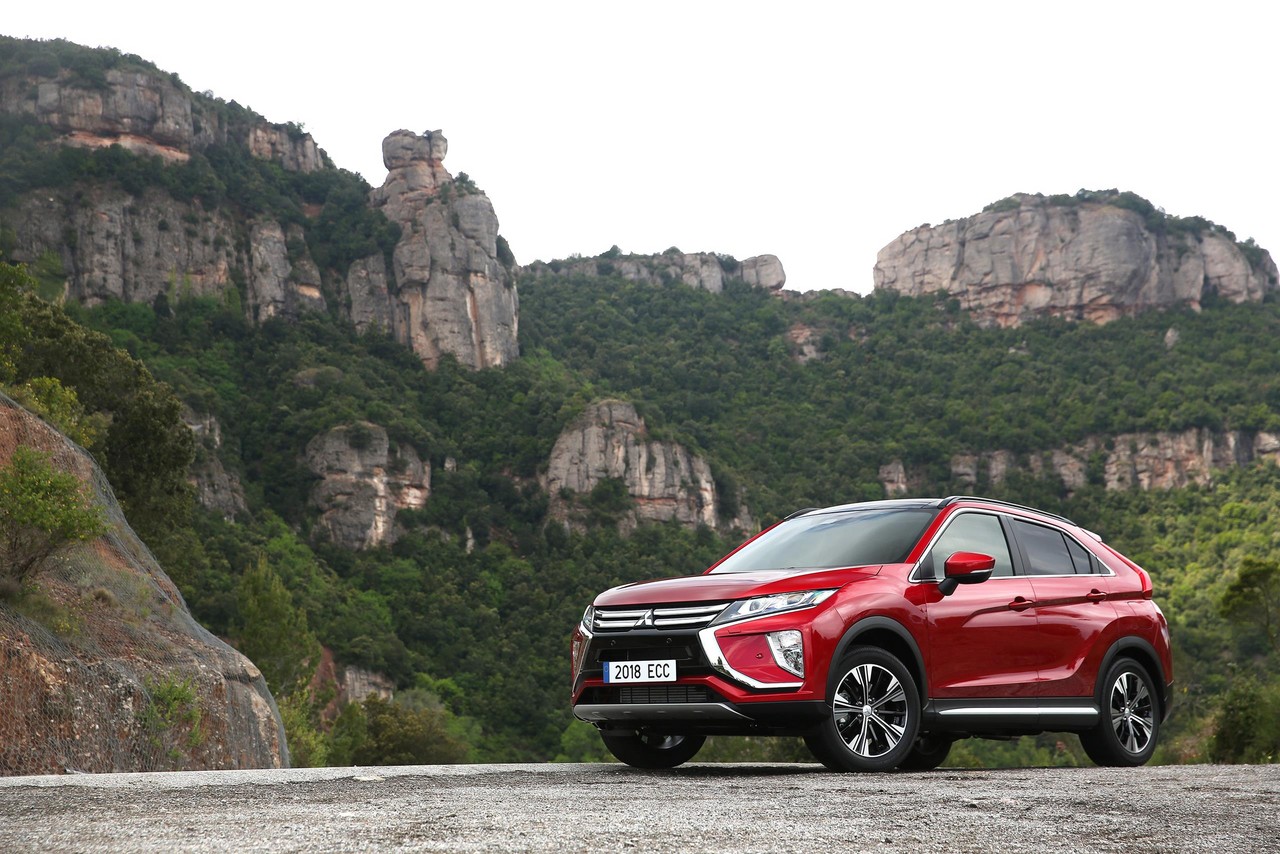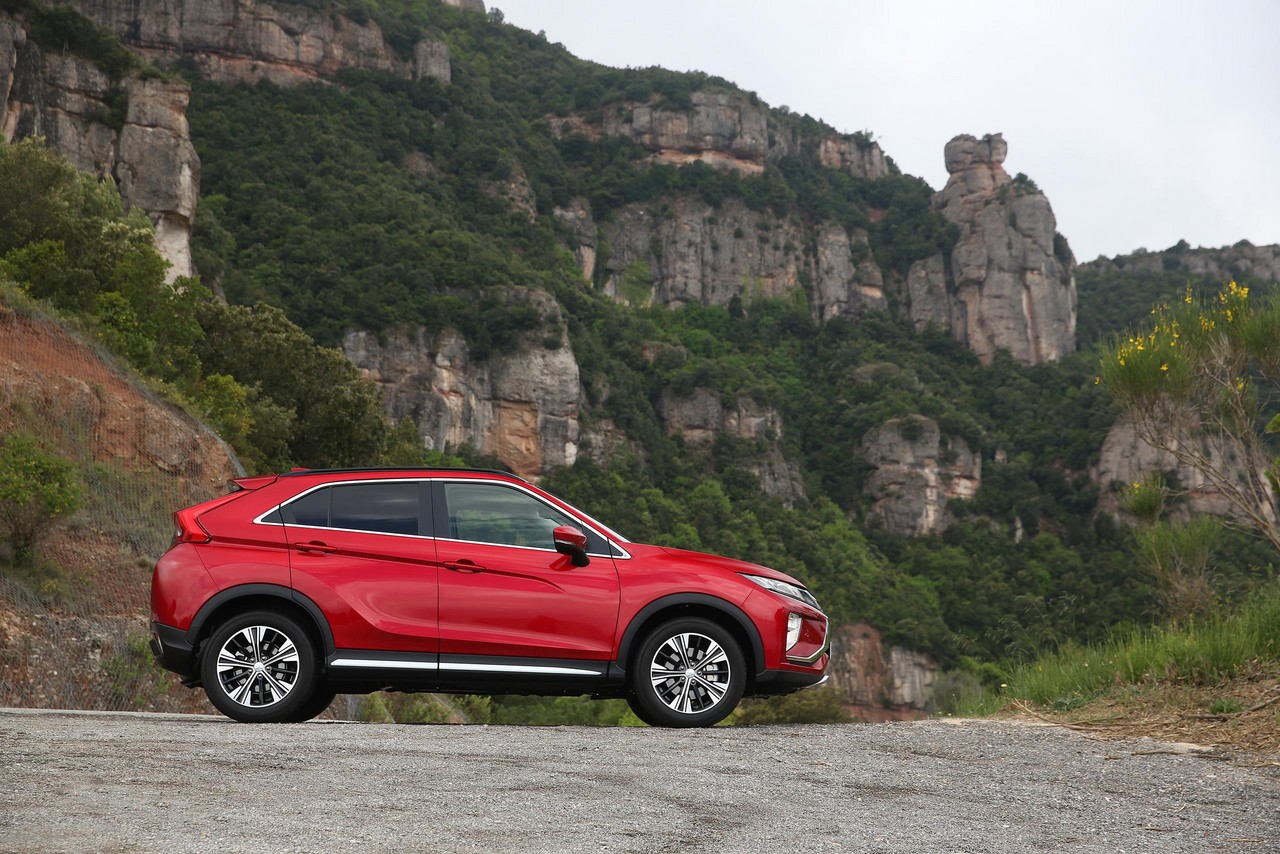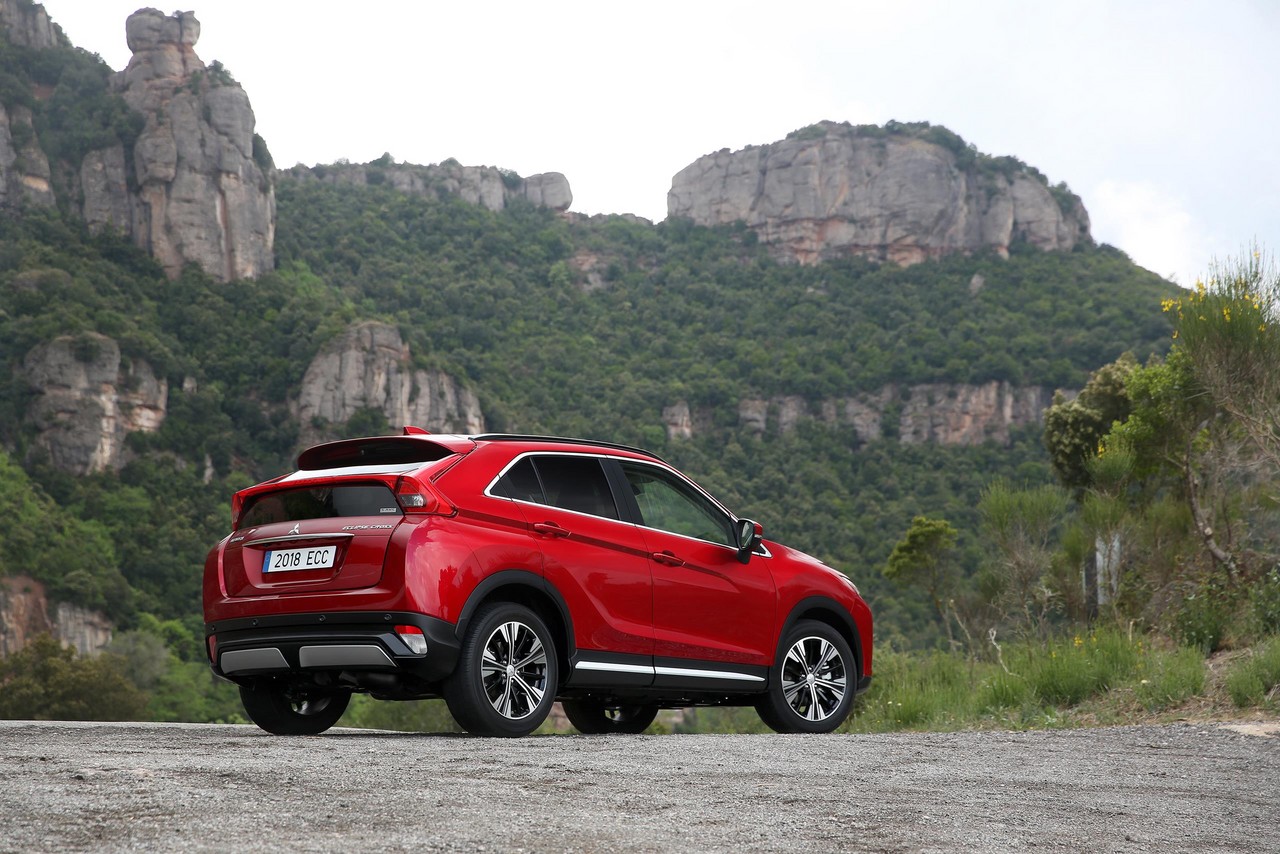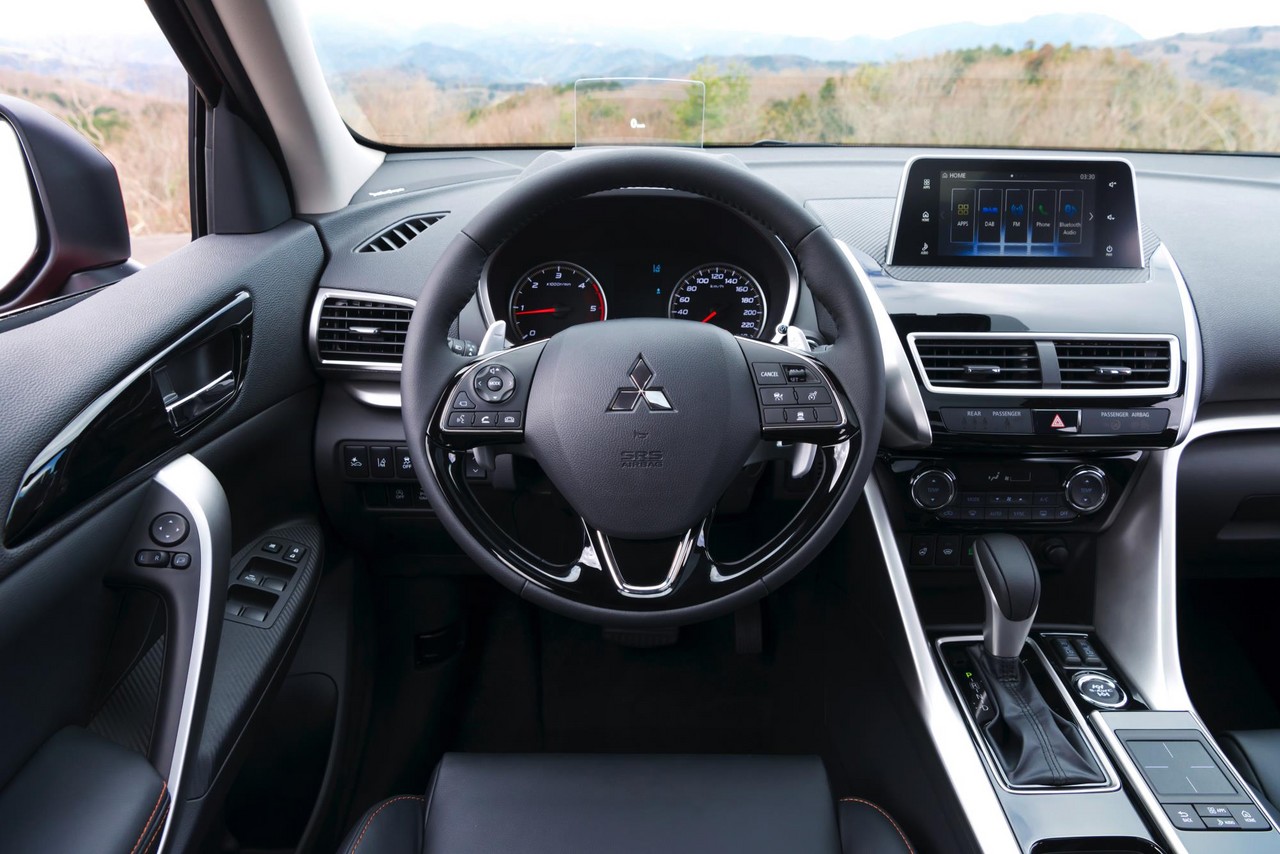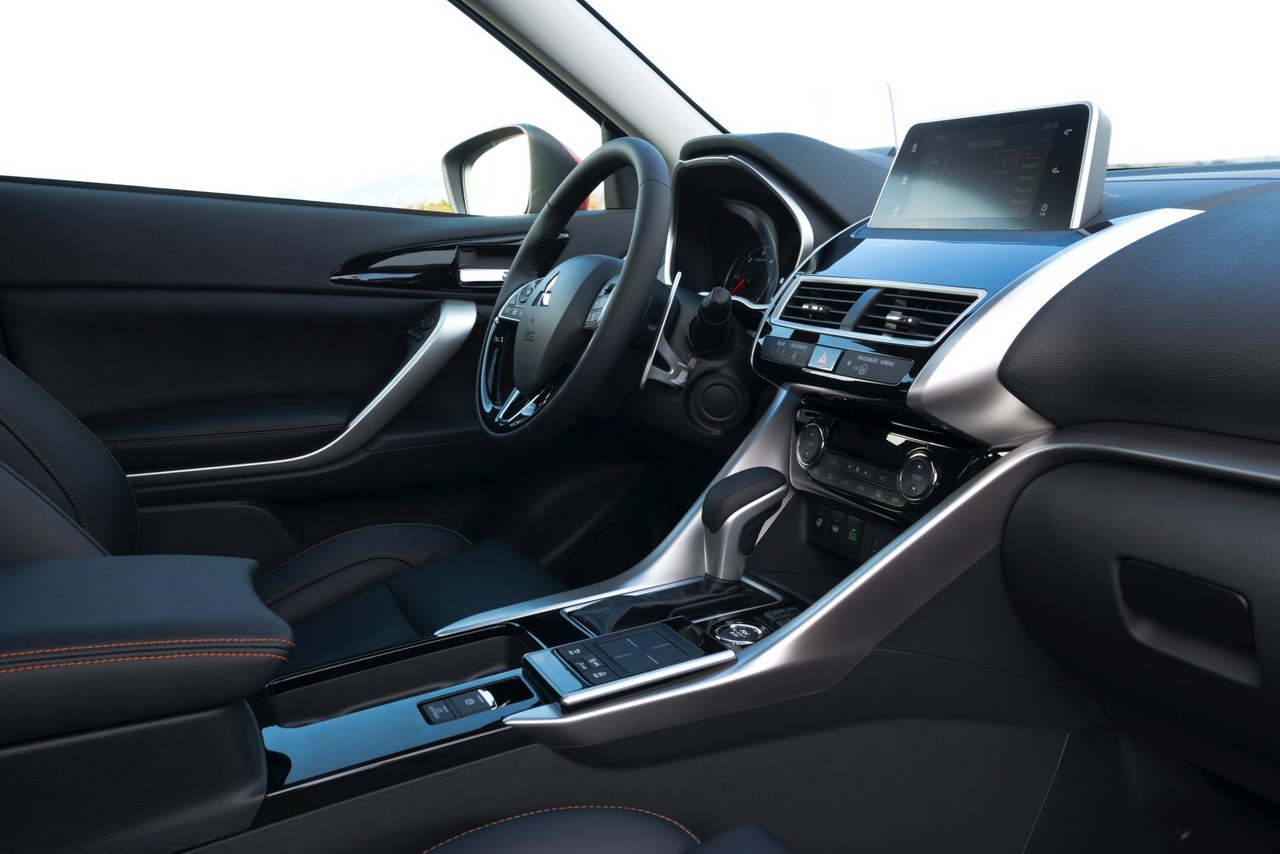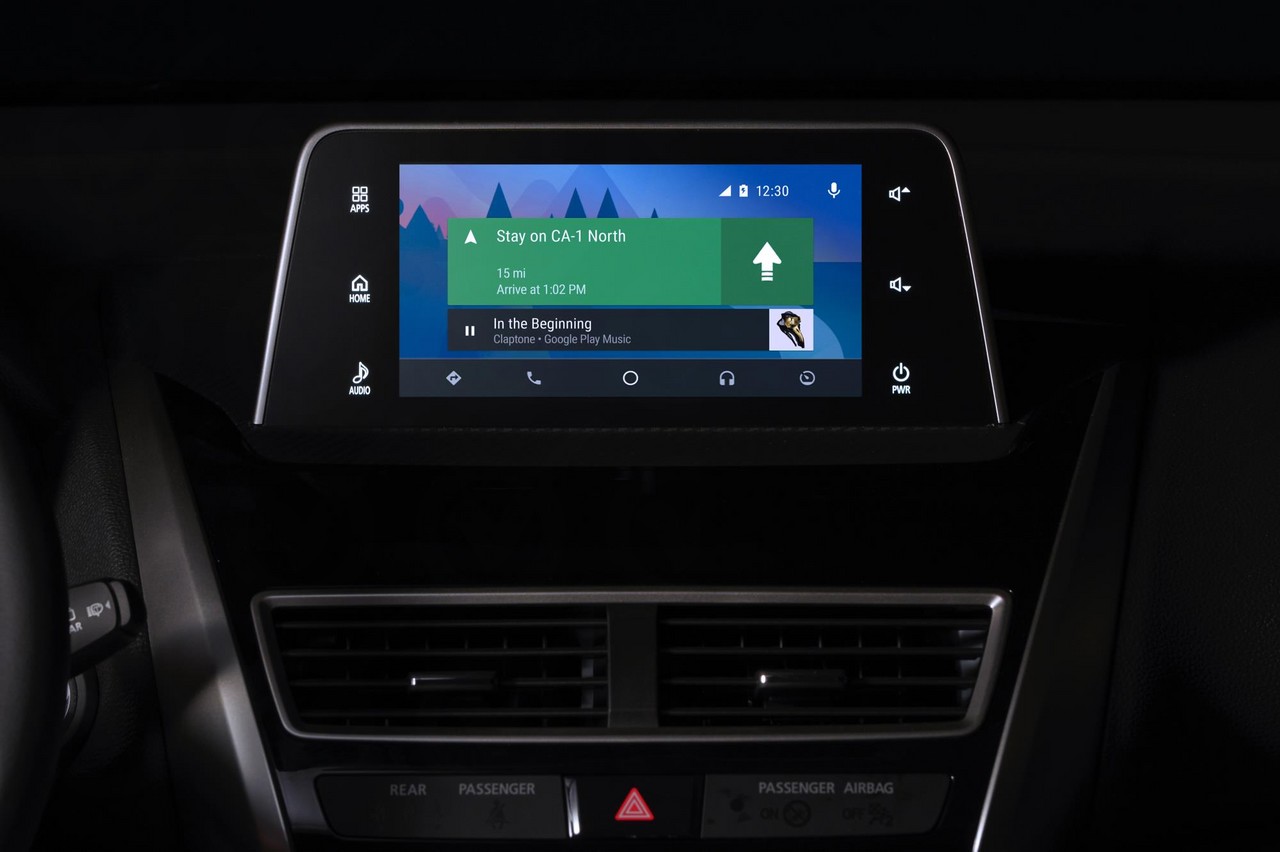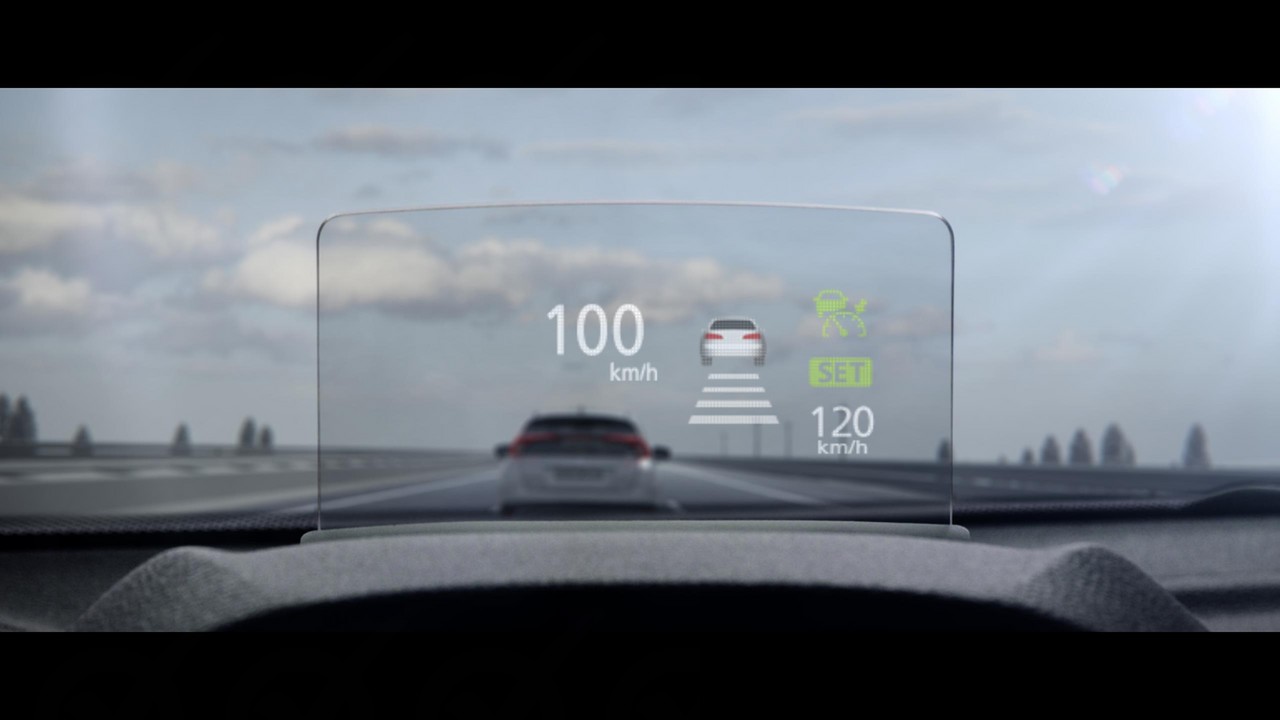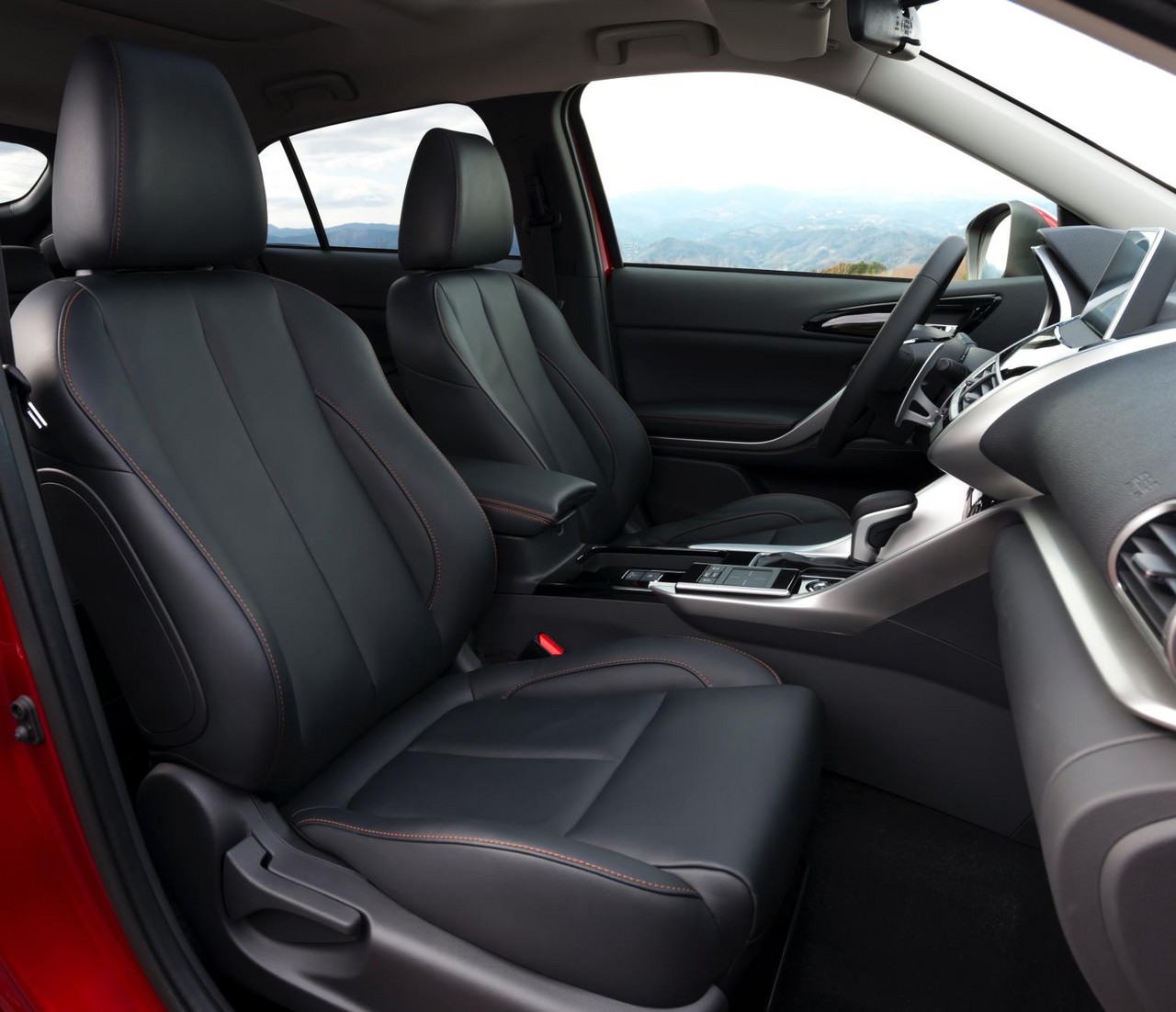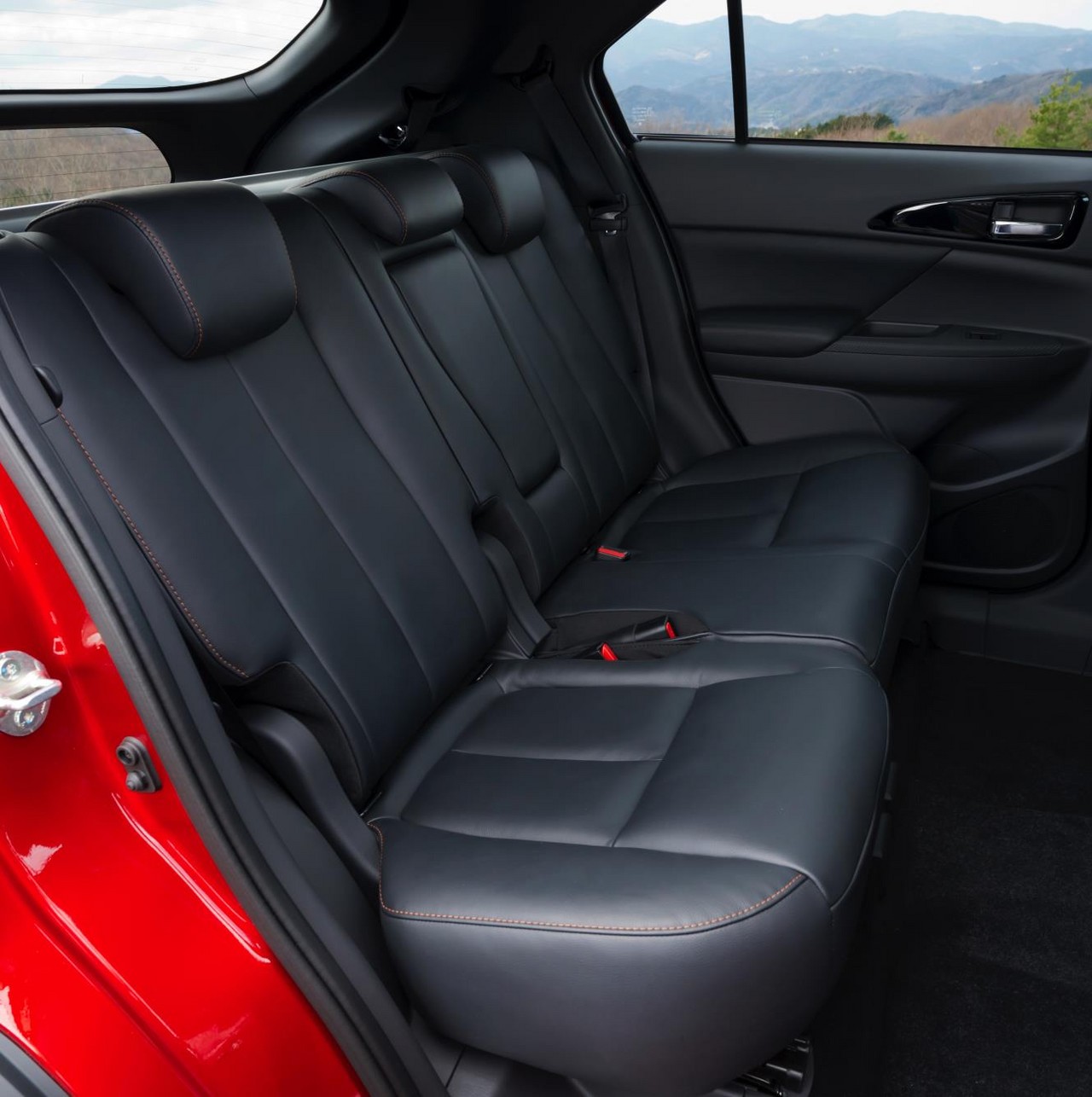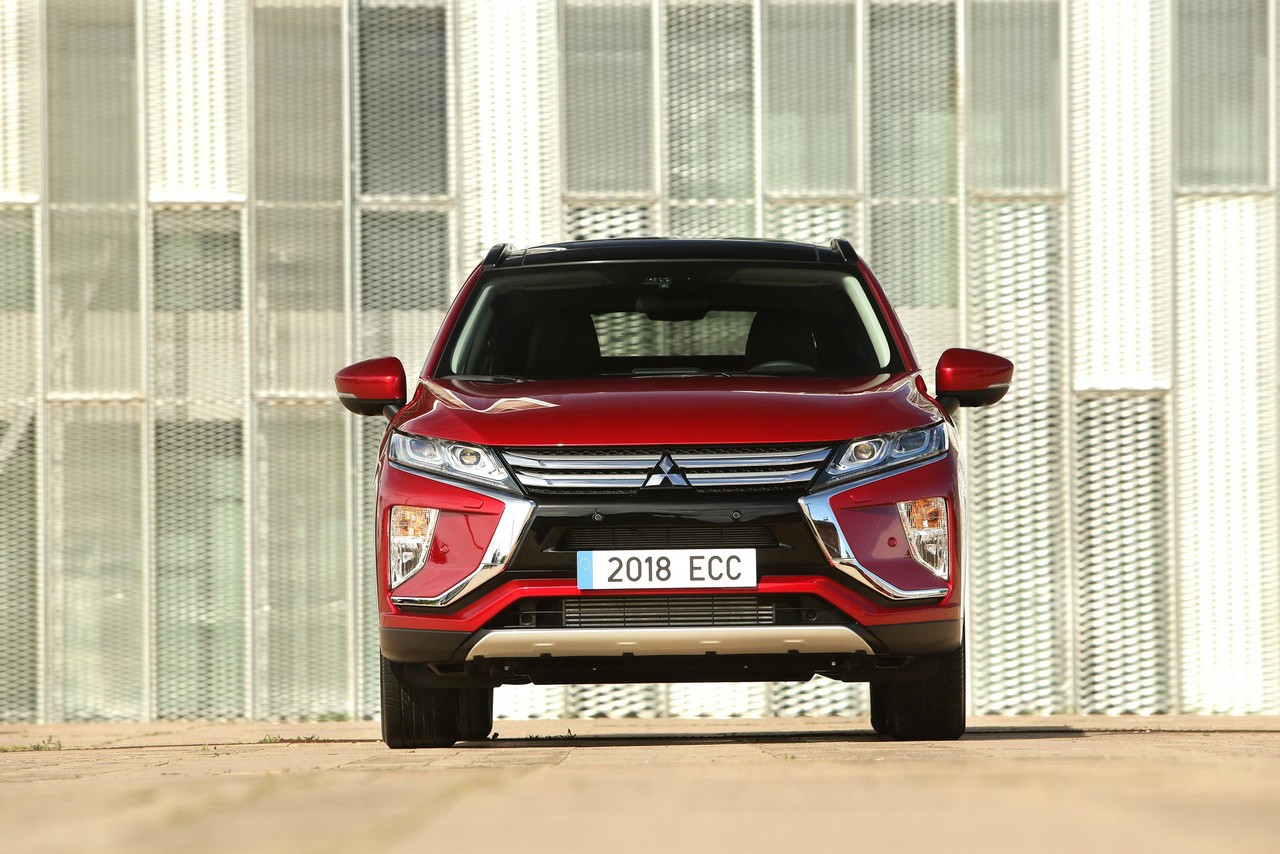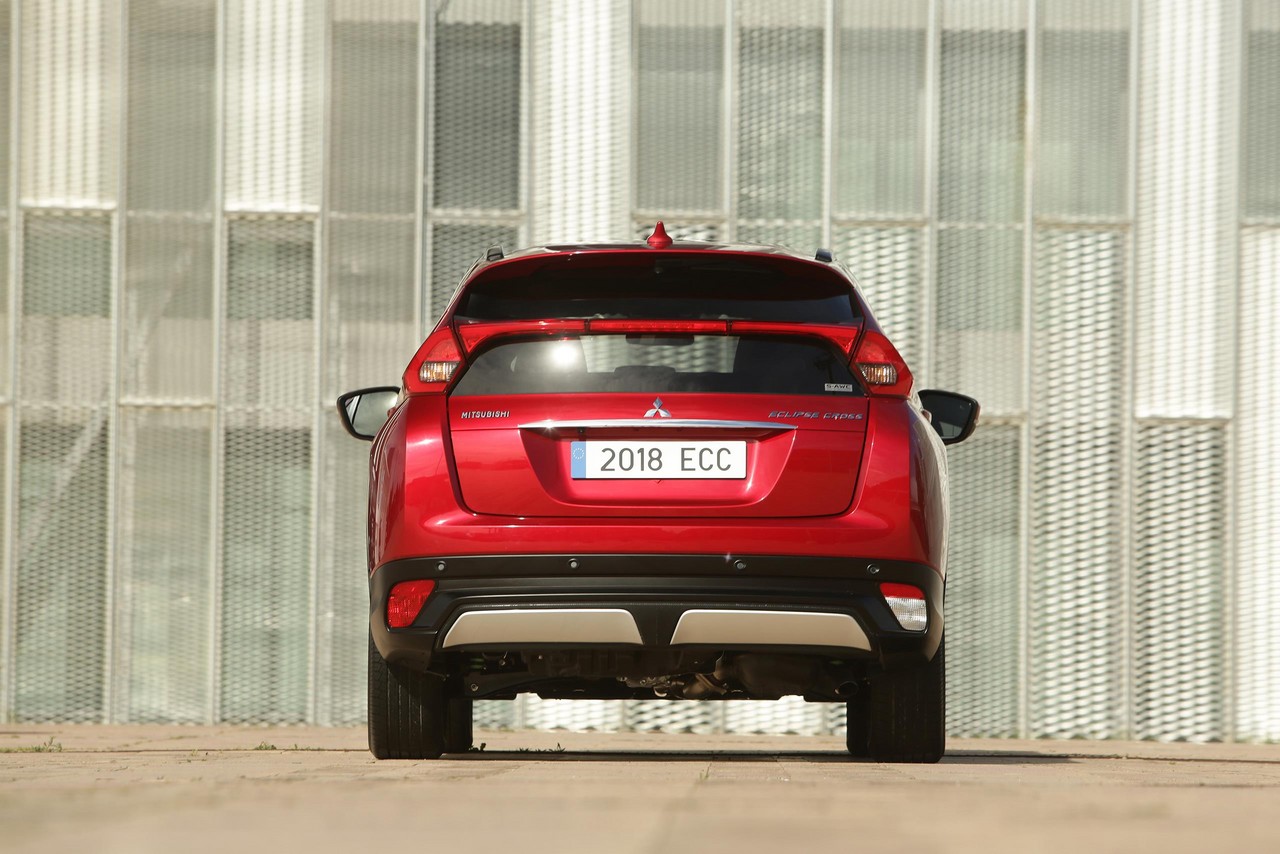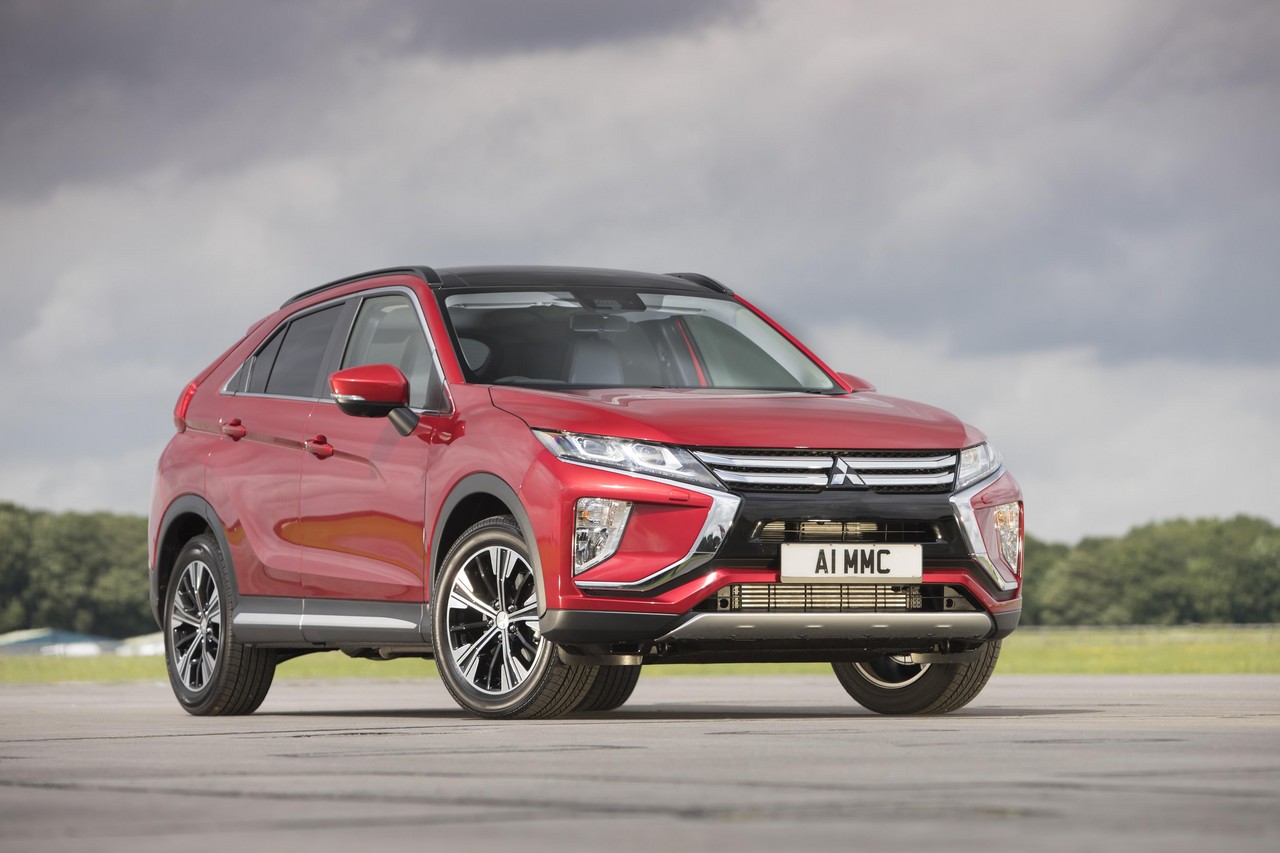
- Autonomous Emergency Braking (AEB) standard and five star Euro NCAP safety rating
- Economical and willing 1.5-liter turbo petrol engine
- All-wheel drive traction
- Sliding rear seat adds versatility
- High retail pricing
- Smartphone Link Display Audio (SDA) is slow, not user friendly and doesn’t include satellite navigation
- Dull interior plastics
- Poor rear seat access, headroom and visibility
Overview
Released in Australia in December 2017, the Mitsubishi GK Eclipse Cross was a ‘compact crossover’ that was positioned between the Mitsubishi ASX and Outlander models. Manufactured at Mitsubishi’s Mizushima Plant in Kurashiki, Japan, the front- and all-wheel drive Mitsubishi Eclipse Cross was powered by a 1.5-litre turbocharged petrol engine that was mated to a continuously variable transmission (CVT) with eight pre-defined ratios. The CVT, however, had a ‘Sport Mode’ manual override and could be controlled via steering wheel gearshift paddles.
As per the table below, the Mitsubishi GK Eclipse Cross range initially consisted of LS and Exceed variants. However,
- In September 2018, an entry-level ES variant was introduced; and,
- From September 2019, the LS variant was available with all-wheel drive (Mitsubishi’s ‘Super All Wheel Control’ or S-AWC).
| Engine | Variant | Drive | Trans. | Peak power | Peak torque |
|---|---|---|---|---|---|
| 1499 cc 4B40 turbo petrol I4 | ES, LS, Exceed |
FWD | 8sp CVT | 110 kW at 5500 rpm | 250 Nm at 2000-3500 rpm |
| LS (2019-on), Exceed |
AWD | 8sp CVT |
Mitsubishi’s Super-All Wheel Control (S-AWC)
The Eclipse Cross Exceed was available with Mitsubishi’s Super-All Wheel Control (S-AWC), an electronically-controlled all-wheel drive system which managed the driving and braking force of all four wheels. In normal conditions, the Eclipse Cross had an 80:20 front:rear torque split, though this could be continuously adjusted to a maximum 55:45 front:rear torque split in ‘Auto’ mode if a low-friction surface was encountered. The driver could also select from ‘Snow’ and ‘Gravel’ modes.
Body and dimensions
The Mitsubishi Eclipse Cross was underpinned by Mitsubishi’s GS platform which was shared with the Mitsubishi CF Lancer and Mitsubishi Mk.3 Outlander . According to Mitsubishi, 55 per cent of the Eclipse Cross’ body was made from high tensile strength steel and structural features included:
- A three-point front strut tower brace;
- Reinforcements to the top cowl, spring housing, rear roof and upper corner rails;
- Adhesive bonding for the door openings, rear tailgate opening and rear wheel housings.
The front-wheel drive Mitsubishi Eclipse Cross had a kerb mass of 1490 kg; for the all-wheel drive models, this increased to 1555 kg.
Compared to the Mitsubishi ASX , the Mitsubishi Eclipse Cross was 110 mm longer (at 4405 mm), 35 mm wider (1805 mm) and 80 mm taller (1685 mm), though wheelbase length was unchanged at 2670 mm. Inside, the 60/40 split rear seats had eight different recline settings and the seat base had up to 200 mm of travel.
Suspension and steering
The Mitsubishi Eclipse Cross had MacPherson strut front suspension and multi-link rear suspension. According to Mitsubishi, the suspension was ‘developed to target precision and cornering ability, while also striking a balance between handling and comfort’. Techniques to achieve these objectives included:
- Fast-response check valves for the dampers to improve damping performance;
- A rebound spring design which enhanced sprung stability;
- The use of thinner front strut spring pads with a slanted layout for more linear loading changes under compression (to improve straight line stability and steering wheel);
- A rear suspension cross-member which had insert bushings for the upper and lower control arms and toe control arm. The low rigidity of the bushings improved absorption of surface shocks and reduces vibrations; and,
- Rigid multi-link rear suspension for accurate cornering and stability.
The Mitsubishi Eclipse Cross had rack-and-pinion steering with electric power assistance; its turning circle was 10.9 metres.
Safety equipment
Standard safety equipment for the Mitsubishi Eclipse Cross included dual front airbags, a driver’s knee airbag, front seat-mounted side airbags, full-length curtain airbags (i.e. for front and rear occupants), ABS, electronic brake force distribution, brake assist, electronic stability control, traction control and front seatbelts with pre-tensioners and load limiters.
As standard, the Mitsubishi Eclipse Cross ES was fitted with –
- Forward Collision Mitigation (FCM): operating at speeds above 5 km/h, FCM used a camera and a short-range radar (models with Adaptive Cruise Control also had a millimetre-wave radar behind the front bumper) to detect vehicles or pedestrians ahead. If there was a collision risk, the driver initially received an audible warning and, if the risk persisted, the brakes would be applied automatically to reduce vehicle speed; and,
- Automatic High Beam (AHB): monitored the headlights and fog lights of oncoming vehicles as well as street lighting and ambient light levels to automatically switch between high and low beam. High beams were automatically activated above 40 km/h in low light conditions when no other vehicle was present.
Beyond this, the Mitsubishi Eclipse Cross LS and Exceed were equipped with Lane Departure Warning (LDW). Active at speeds above 65 km/h, LDW used the camera to monitor the vehicle’s position within its lane and would alert the driver if the vehicle was about to drift out of its lane. Activating the indicators, however, disabled the LDW system.
The Mitsubishi Eclipse Cross Exceed was further equipped with:
- Adaptive Cruise Control: when cruise control was active, ACC used a 77 GHz millimetre-wave radar to monitor the distance to the vehicle ahead and provide automatic braking and accelerating to maintain a safe distance. The vehicle could brake until it is stationary and a touch of the accelerator or flick of a switch would cause the vehicle to accelerate when the vehicle ahead started moving (‘stop-go traffic functionality’);
- Blind Spot Warning (BSW) with Lane Change Assist (LCA) and Rear Cross Traffic Alert (RCTA): using two radio wave radars located behind the rear bumper, the BSW system warns the driver of vehicles approaching from the rear and side, including the blind spot, and assists during lane change and reversing manoeuvres. BSW operates within a range of 70 m from behind (and 3 m from either side of the car) and a speed of 10 km/h (17 km/h for the Rear Cross Traffic Alert). Furthermore, door mirror indicators and buzzer sounds support the driver when changing lanes or manoeuvring;
- Ultrasonic misacceleration Mitigation System (UMS): UMS was designed to reduce the likelihood and severity of the vehicle colliding with obstacles as a result of the driver mistakenly pressing the accelerator at speeds up to 10 km/h. UMS relied upon ultrasonic sensors to detect obstructions in front of or behind the vehicle and, if a collision risk was present, would emit an audible warning and limit engine power; and,
- Around vehicle monitor with bird-view image: used four cameras that were positioned around the vehicle and which could show five different views on the touchscreen: front, rear, right, left and a composite 360 degree overhead image. Parking guidelines – which responded in real time to steering wheel movements – were also shown on the touchscreen.
Euro NCAP testing
In Euro NCAP testing , the Mitsubishi Eclipse Cross received a five star safety rating which included a 97 per cent adult occupant protection rating and a 78 per cent child occupant protection rating. In the frontal offset test, protection for the front occupants was generally rated as good, though protection of the passenger’s chest and the driver’s lower left leg was rated as adequate (i.e. a slight risk of serious injury). In the side impact and pole tests, however, maximum points were awarded.
Features: Mitsubishi Eclipse Cross ES
As standard, the Mitsubishi Eclipse Cross ES was fitted with Mitsubishi’s Smartphone Link Display Audio (SDA) system which had a seven-inch touchscreen, a Touchpad Controller, smartphone integration (via Android Auto and Apple CarPlay) and Bluetooth mobile phone connectivity. The Mitsubishi Eclipse Cross was also fitted with a six speaker sound system, digital radio tuner (DAB+) and supported the following audio formats: MP3, WMA, AAC, FLAC, Vorbis and WAV.
Beyond this, standard features for the Mitsubishi Eclipse Cross ES included 18 x 7.0J alloy wheels with 225/55 R18 tyres, climate control air conditioning, cruise control, halogen headlights, LED daytime running lights, front fog lights, dusk-sensing headlights, rain-sensing wipers, a rear view camera, 60/40 split and folding rear seats which could slide 200 mm fore/aft, a leather-wrapped steering wheel with gearshift paddles, remote central locking, power adjustable mirrors, power windows, tilt and telescopic steering wheel adjustment, a height adjustable driver’s seat, roof rails, a trip computer, an alarm and immobiliser.
Features: Mitsubishi Eclipse Cross LS
Compared to the Eclipse Cross ES, the Eclipse Cross LS added front and rear parking sensors, a proximity key (i.e. keyless entry), heated door mirrors with power folding function, push-button start, an electric park brake, a centre rear armrest with cup holders, rear privacy glass and a chrome tailgate garnish.
Features: Mitsubishi Eclipse Cross Exceed
The range-topping Mitsubishi Eclipse Exceed was distinguished by its dual-zone climate control air conditioning, leather-faced seats, power adjustable and heated front seats, LED headlamps with auto levelling, head-up display, auto-dimming rear view mirror and power-operated panoramic sunroof.
2018 Mitsubishi Eclipse Cross Sport Edition
Released in Australia in September 2018, the Mitsubishi Eclipse Cross Sport Edition was based on the entry-level ES variant. Visually, the Eclipse Cross Sport edition could be identified by its black grille, black door mirror covers and side and corner skirts with a red pinstripe. The Mitsubishi Eclipse Cross Sport Edition had a recommended retail price of $30,990 (excluded on-road costs).
2019 Mitsubishi Eclipse Cross Black Edition
Released in Australia in September 2019, the Mitsubishi Eclipse Cross Black Edition was based on the entry-level ES variant. Visually, the Eclipse Cross Black Edition could be identified by its front skid plate, black front bumper and radiator grille and black spoiler. Inside, the Eclipse Cross Black Edition had a black interior.
Specifications
- Specifications: Mitsubishi GK Eclipse Cross (December 2017)
- Specifications: Mitsubishi GK Eclipse Cross (September 2018)
